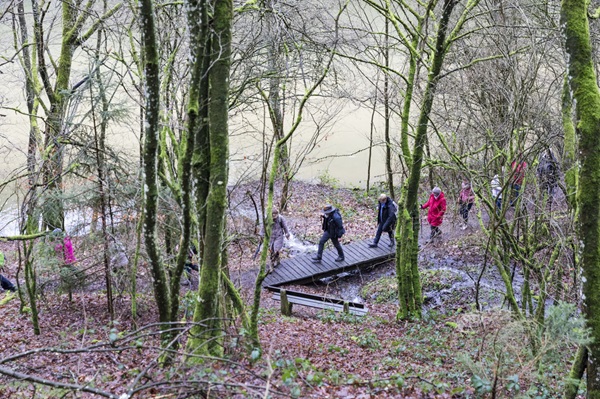 Ramsar 2020;
Credit: Caroline Martin©
Ramsar 2020;
Credit: Caroline Martin©
Upper Sûre Natural Park recalled that, on 2 February 1971, the oldest international nature conservation treaty dedicated to the preservation of wetlands was signed in Ramsar, Iran; the park is organising a guided hike exploring the tracks of the beaver on the occasion of World Wetlands Day.
Meanwhile, as many as 2,471 wetlands (total 256,192,356 ha) in 172 states have been declared RAMSAR Areas (www.ramsar.org). All living environments linked to water such as springs, streams, wet meadows, swamps, lakes, etc fall under the term "wetland". In 1971, wetlands were perceived as important mainly due to their role as an environment for breeding and resting places for birds. However, wetlands are living environments for various species.
Luxembourg ratified the RAMSAR convention in 1998 and today the country has two areas of global importance – “Haff Réimech” (313 ha) and “Vallée de la Haute-Sûre” (one of the rare cross-border areas with 16,900 ha at Luxembourg and 29,000 ha in Belgium). While there are many natural RAMSAR zones internationally such as Lake Aral, the Camargue and others, the two zones declared in Luxembourg are the result of human activity: Haff Réimech is a former gravel pit and Lac de la Haute-Sûre was created, among other things, for the supply of drinking water.
With the reservoir, the natural course of the Sûre was interrupted – a disaster for many animal species. However, today, it does have added value for many animal and plant species, just as for humans. Nevertheless, many wetlands are currently in poor condition, if they have not already disappeared. Globally, the number of wetlands has declined by approximately 50%. In France, there was a decline of 67%, and in Luxembourg, the decline was 80%. The Upper Sûre region is no exception.
The need for profitability in the agricultural sector is not the only cause of the loss of land, but it increases the risk of water pollution by nitrates and pesticides. Rapid population growth leads to increased fragmentation of the landscape and requires permanent adaptation of wastewater treatment infrastructure, the Upper Sûre Natural Park added. In addition, the pressure on bathing waters from leisure activities has reached a barely manageable level in recent years.
Apart from the quality of the water – the Upper-Sûre Lake is the largest drinking water reserve in Luxembourg – the Upper-Sûre Natural Park stressed that the multiple living environments, such as streams, wet meadows, swamps, etc. must be preserved in the watershed. With this in mind, the majority of natural living environments in the Upper-Sûre region have been declared a National Nature Reserve (in 2014) or even a NATURA 2000 zone (in 2018), which highlights its value from the point of view of nature preservation allows the consideration of extensive protection measures.
Guided hike: in the footsteps of the beaver
On the occasion of International Wetlands Day, the Upper-Sûre Natural Park is organising a 7-km guided hike in the Béiwenerbaach valley on Sunday 4 February 2024. The hike descends from Berlé into the still natural stream valley and allows visitors to follow, among other things, the tracks of the beaver.
Along the way, nature park staff provide information about the habitats, their inhabitants and the challenges of nature and water protection. The hike takes place from 10:00 to 14:00. Participation is free, but registration is required via info@naturpark-sure.lu or 8993-311.








